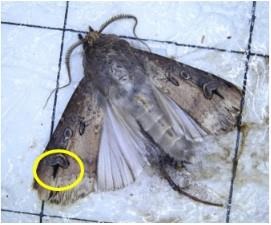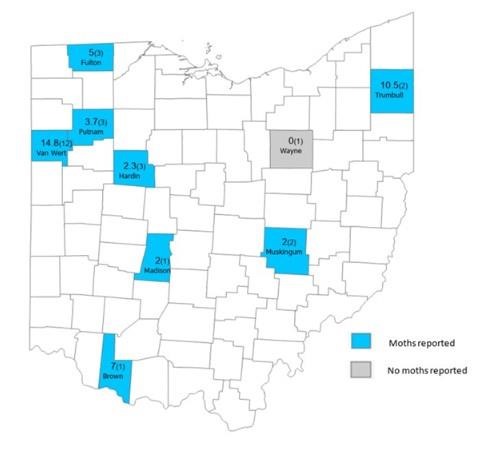For corn varieties tolerant of BCW, please review the Handy Bt Trait Table: https://aginsects.osu.edu/bt-corn-trait-table

Figure 1. Black cutworm moth (BCW). Distinct black, dagger shaped markings on the forewing (circled in yellow).
Black cutworm moth report - Week 2
May 2 to May 8, 2022

Figure 2. Average black cutworm (BCW) moths captured from May 2nd to May 8th. Large number indicates the average moth count for the week and the small number in parentheses is the total traps set up in the county.
Source : osu.edu